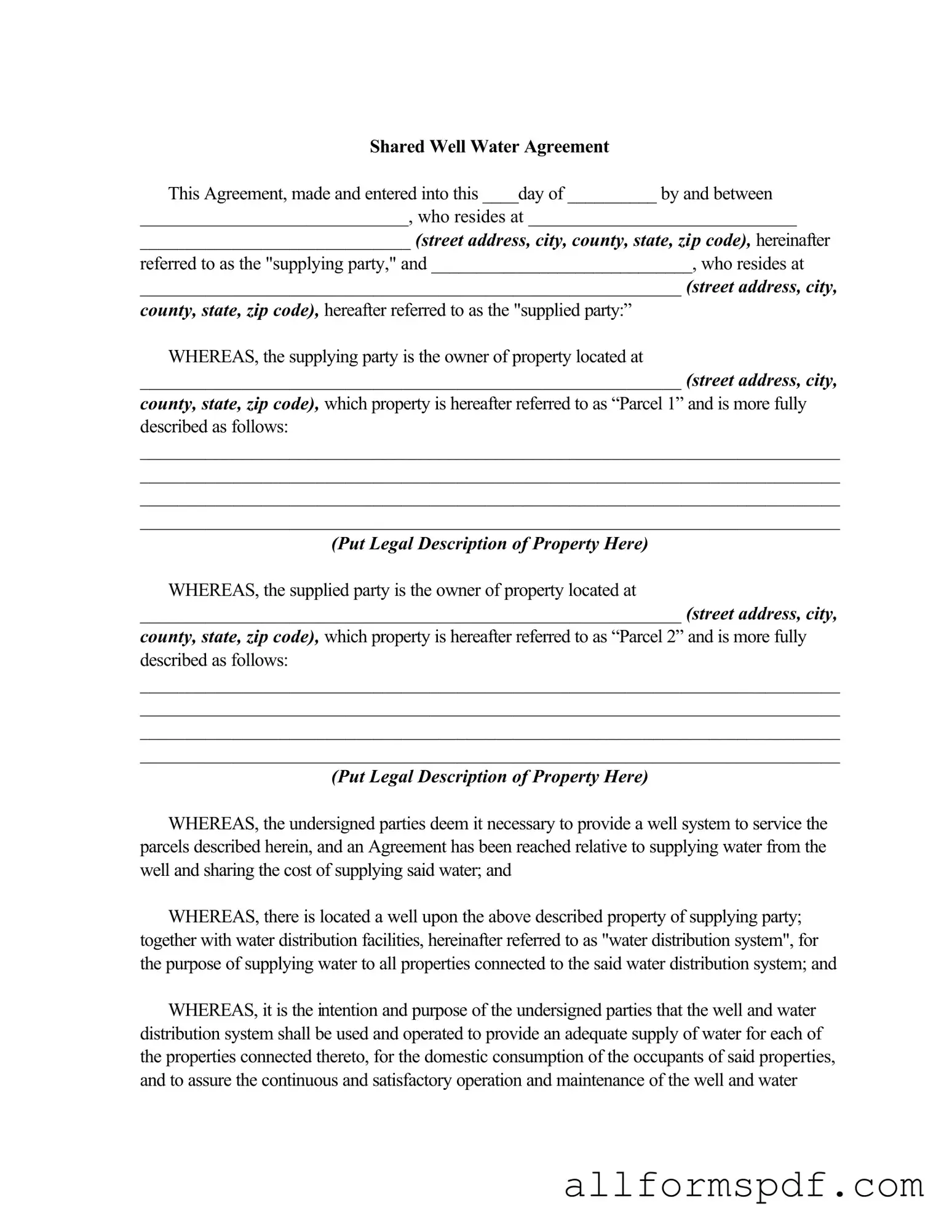When filling out the Shared Well Agreement form, individuals often make several common mistakes that can lead to misunderstandings or disputes later on. Being aware of these pitfalls can help ensure a smoother process and a more effective agreement.
One frequent error is the failure to provide complete and accurate property descriptions. Each parcel of land should have a detailed legal description, which is essential for identifying the properties involved. Omitting this information can create confusion regarding which properties are covered under the agreement. It is crucial to double-check that all addresses and legal descriptions are correctly entered.
Another mistake people often make is neglecting to specify the annual fee for the use of the well and water distribution system. This fee should be clearly stated, along with the payment schedule. If this information is left blank or inaccurately filled out, it can lead to disagreements about costs and payment responsibilities in the future.
Additionally, parties sometimes overlook the importance of defining emergency situations. While the agreement does mention emergencies, it is beneficial for parties to explicitly outline what constitutes an emergency and the procedures to follow. This clarity can prevent confusion and ensure that all parties know how to act in urgent situations.
Some individuals also fail to understand the implications of shared expenses. The agreement states that costs for maintenance and repairs will be split between the parties. However, if these responsibilities are not clearly communicated or understood, it can lead to disputes about who is responsible for what costs. Clear communication about financial obligations is essential for maintaining a harmonious relationship.
Finally, parties may forget to discuss the termination process of the agreement. It is vital to understand how one can withdraw from the agreement and what steps need to be taken. Without this understanding, individuals may find themselves in a situation where they feel trapped in the agreement or are unsure how to proceed if they wish to terminate their participation.
By being mindful of these common mistakes, individuals can approach the Shared Well Agreement form with greater confidence and clarity. Taking the time to ensure that all details are accurate and clearly defined will contribute to a more effective and cooperative arrangement for all parties involved.
